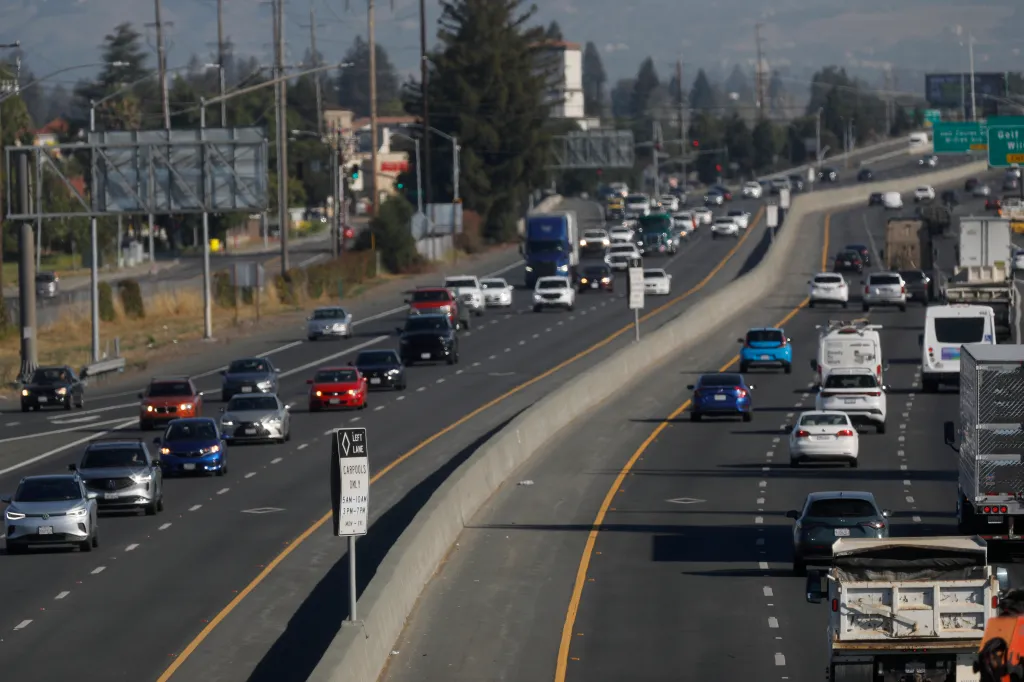
If you drive Highway 101 from Sonoma County into San Francisco, as I do, you’ve probably noticed your commute getting longer and more frustrating. That’s not your imagination. Caltrans recently expanded carpool lane hours from a modest window to a sprawling 5 a.m. to 10 a.m. and 3 p.m. to 7 p.m. every weekday.
What looks like a policy tweak on paper has translated into a half hour or more of additional travel time. A trip from Santa Rosa into San Francisco that was already grueling has become unpredictable and, for many, unbearable.
The frustrating part isn’t just the congestion. It’s that these hours were imposed without the corridor-specific traffic analysis our communities deserve. Caltrans officials admit they set the hours primarily to make them “consistent” with those on Bay Area bridges — not because data showed it was the right move for Highway 101 traffic patterns. That’s bureaucratic convenience at the expense of real people’s lives.
The rollout of the extended hours was bundled with the Marin-Sonoma Narrows project, which capped a decades-long effort to add continuous carpool lanes along the corridor. But the justification for stretching carpool windows to nine hours a day was never made clear. Instead, commuters were told longer hours would “encourage carpools, buses, and trains.”
That sounds good in theory. But theory isn’t policy. The truth is that most North Bay residents don’t have practical access to transit that matches their work schedules or job locations. Encouraging carpools and transit is a worthy goal — but not when it comes at the direct cost of everyone else’s time, productivity and sanity.
Ask anyone who drives 101 through Marin: the heaviest congestion isn’t spread neatly from 5 a.m. to 10 a.m. or 3 p.m. to 7 p.m. Traffic has peaks and valleys. By locking down an extra lane for such extended windows, Caltrans is artificially squeezing general traffic into fewer lanes during times when the restriction does little to improve carpool throughput.
Even local transportation officials raised red flags. They warned that extended carpool hours would choke critical merge points in San Rafael, Corte Madera and Novato. Commuters are now experiencing exactly what they predicted: bottlenecks and slower average speeds.
The people who bear the brunt of this policy aren’t abstract “drivers.” They’re nurses commuting from Santa Rosa to jobs in San Francisco. They’re tradespeople hauling equipment who can’t just hop on a bus. They’re parents leaving early to pick up their kids and now sitting in traffic longer than ever.
Extended carpool hours don’t just waste time — they eat into family life, strain small businesses and increase emissions from idling cars. That’s not progress.
No one is arguing against carpools, buses or trains. But transportation policy should be based on real-world data, not a one-size-fits-all template borrowed from bridge toll lanes.
Here’s what needs to happen immediately:
Transparency. Caltrans should release the traffic analysis (if any) that justified these new hours. If the decision wasn’t based on local modeling, they need to admit it.
Monitoring. Commute times and traffic flow on 101 should be tracked in real time to measure the actual impact of extended carpool hours.
Reassessment. If the data shows that congestion has worsened — any driver can tell you it has — Caltrans should scale back the hours until a fair, locally tailored plan is developed.
Public input. North Bay commuters deserve hearings in Santa Rosa, Petaluma and San Rafael before more “consistency” policies are imposed from afar.
The North Bay has always been car-dependent. That’s not because people are stubborn or anti-environment. It’s because housing patterns, jobs and transit options make driving the only realistic choice for most. Yet policymakers seem intent on treating commuters who drive alone as the problem — and punishing them with longer and longer restrictions.
That’s not how you win people over to public transportation. It’s how you breed resentment and distrust in a California government that is already overly burdensome.
Highway 101 is the lifeline of the North Bay. Decisions should be made with real data, transparent analysis and input from the people who depend on the road. Until Caltrans can show that these nine-hour carpool windows are making traffic better instead of worse, they should be rolled back.
Timothy Omi is president of the San Francisco Council of District Merchants Associations. He lives in Santa Rosa.